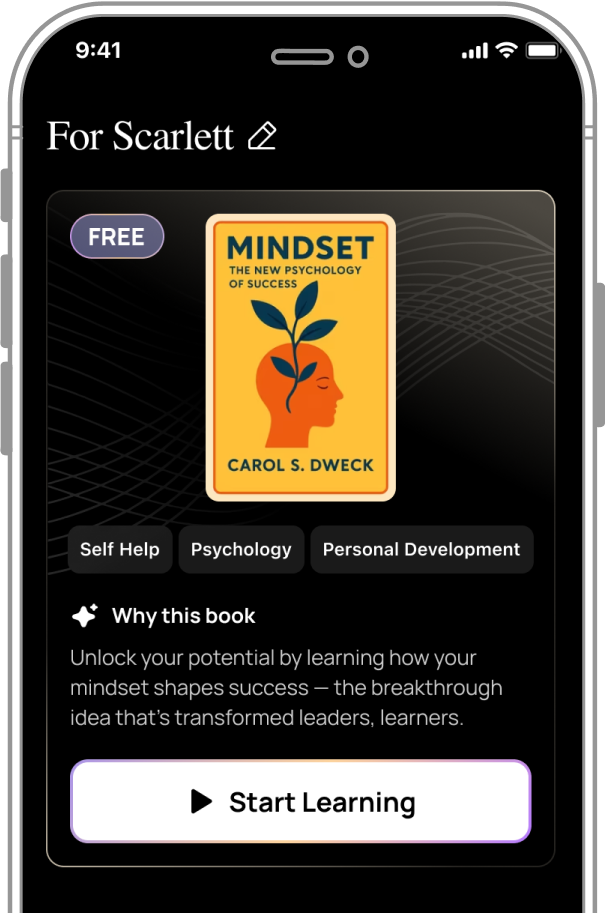What is
The Stoic Challenge by William B. Irvine about?
The Stoic Challenge teaches readers to reframe adversity as opportunities for growth using Stoic philosophy. Irvine emphasizes techniques like the Stoic Test Strategy—viewing setbacks as intentional challenges to build resilience—and the framing effect to manage emotional responses. The book provides actionable steps to maintain inner tranquility through practices like negative visualization and toughness training, helping readers respond calmly to life’s obstacles.
Who should read
The Stoic Challenge?
This book is ideal for professionals, leaders, and anyone facing high-stress environments or personal setbacks. It’s particularly valuable for those interested in Stoicism, emotional control, or practical self-improvement strategies. Individuals dealing with chronic stress, career challenges, or health crises will find tools to transform adversity into resilience-building moments.
Is
The Stoic Challenge worth reading?
Yes, Irvine’s blend of ancient philosophy and modern psychology offers timeless strategies for mental resilience. Readers gain tools like reframing setbacks, anchoring techniques, and self-graded challenges to navigate stress. Its concise, actionable advice makes it a standout guide for anyone seeking to reduce frustration and cultivate calm in turbulent situations.
How does the Stoic Test Strategy work?
The strategy involves imagining setbacks as intentional tests from “Stoic gods” to strengthen resilience. By reframing obstacles this way, you bypass reactive emotions like anger, focus on solutions, and grade your response afterward. This mental shift helps maintain emotional stability and turns adversity into a game of resourcefulness.
What is the framing effect in
The Stoic Challenge?
Irvine uses the framing effect—a psychological phenomenon where perception shapes emotional response—to teach readers to reinterpret setbacks. For example, viewing a job loss as a chance to explore new paths (rather than a failure) reduces distress and fuels proactive problem-solving.
How can
The Stoic Challenge help with anger management?
The book advises using the five-second rule: Pause immediately after a setback to invoke the Stoic Test reframe. This disrupts anger’s momentum, allowing time to choose a calm response. Irvine argues that avoiding anger preserves mental energy for constructive solutions.
What are criticisms of
The Stoic Challenge?
Some may find the “Stoic gods” metaphor overly simplistic or dismissive of complex trauma. Others note that while reframing helps with minor setbacks, deeper psychological issues might require additional strategies beyond the book’s scope.
How does
The Stoic Challenge compare to other Stoic books?
Unlike theoretical guides, Irvine focuses on practical daily applications, offering specific tools like toughness training and setback grading. It complements classics like Meditations by providing modern techniques for handling workplace stress, relationship conflicts, and personal crises.
Can
The Stoic Challenge improve workplace resilience?
Yes, Irvine’s strategies help professionals reframe deadlines, conflicts, or failures as tests of composure. For example, viewing a missed promotion as a chance to develop grit can reduce resentment and motivate skill-building. The book’s emphasis on solution-oriented thinking aligns with leadership and teamwork goals.
What is “toughness training” in the book?
Toughness training involves voluntarily facing small adversities (e.g., cold showers or challenging tasks) to expand your comfort zone. By practicing resilience in controlled settings, you build confidence to handle unpredictable real-world setbacks with Stoic calm.
How relevant is
The Stoic Challenge in 2025?
In an era of remote work, AI disruption, and global uncertainty, Irvine’s teachings on adaptability remain critical. The book’s focus on emotional agility and reframing unpredictability aligns with modern needs for mental health and career sustainability.
What are key quotes from
The Stoic Challenge?
While not verbatim, central ideas include:
- “Setbacks are invitations to practice courage, not punishments.”
- “Your response to adversity defines its impact.”
- “Anchor your mind in gratitude to dissolve frustration.”
How to apply
The Stoic Challenge to parenting?
Parents can model reframing by treating challenges (e.g., a child’s tantrum) as tests of patience. Irvine’s self-grading technique encourages reflecting on reactions post-conflict, fostering emotional regulation that children emulate.









